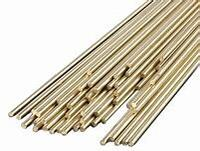1. Introduction
Copper prices surged past $9,500 per metric ton this week—the highest level since early 2022—driven by rising demand in renewable energy infrastructure and electric vehicle manufacturing (source: London Metal Exchange, May 2024). As a result, scrappers and DIY recyclers are rushing to recover clean copper from old wiring, motors, and cables. But before you can cash in, you need to know the best way to strip copper wire efficiently and safely.

Stripping insulation from copper conductors isn’t just about profit—it’s about preparing material that meets scrap yard standards. Whether you’re dealing with thin household wiring or thick industrial cables, this guide covers proven techniques, tool recommendations, and critical safety tips. We’ll also clarify how copper wire relates to other copper forms like copper rod, copper strip, and copper bonded ground rods—so you don’t confuse valuable scrap with non-recyclable alloys.
2. Why Stripping Copper Wire Matters
Scrap yards pay significantly more for bare bright copper (clean, unoxidized, stripped wire) than insulated or mixed copper. Burning copper wire for scrap is illegal in many areas and releases toxic fumes—never do it. Proper stripping preserves copper quality, maximizes resale value, and supports safe recycling practices.
- Bare bright copper can fetch up to 30% more than insulated wire.
- Clean copper wire avoids contamination penalties at recycling centers.
- Stripped copper is easier to sort, weigh, and transport.
3. Tools You’ll Need
The right tool depends on your volume and wire type:
- Wire strippers (manual): Ideal for small jobs and thin gauges (e.g., 14–22 AWG).
- Automatic wire stripper: Great for medium volumes; adjusts to multiple diameters.
- Razor knife or utility knife: Use cautiously for thick insulation—but avoid nicking the copper.
- Motorized cable stripper: Best for large-scale operations (e.g., stripping wire for scrap businesses).
- Heat gun (optional): Softens tough insulation like PVC without burning.

Avoid using pliers alone—they often crush or stretch the copper, reducing its value.
4. Step-by-Step: How to Strip Copper Wire Safely
4.1. Sort Your Wire First
Separate copper wire from aluminum, steel-core, or copper-clad aluminum (CCA). CCA looks like copper but contains little recoverable copper. True copper wire is soft, reddish-brown, and bends easily. If unsure, check for markings like ‘CU’ or ‘Copper.’
4.2. Choose the Right Method by Gauge
For thin wires (<10 AWG): Use manual strippers. Cut a small slit in the insulation, then pull it off cleanly.

For thick cables (>6 AWG): Score the insulation lightly with a utility knife, rotate the cable, and peel back the sheath. Never cut deeply—you risk slicing the copper strands inside.
For Romex or NM cable: Remove the outer jacket first, then strip individual conductors.
4.3. Use a Motorized Stripper for Speed
If you’re stripping wire for scrap regularly, invest in an automatic stripper. Feed the wire through, adjust the blade depth, and let the machine do the work. It’s the fast way to strip copper wire without fatigue or injury.
4.4. Clean and Bundle
After stripping, wipe off dirt or grease. Coil bare copper neatly and label by type (e.g., ‘bare bright,’ ‘motor wire’). This helps scrap yards process your load faster—and may earn you a premium price.
5. Common Mistakes to Avoid
- Burning copper wire for scrap: Releases dioxins and destroys copper purity.
- Mixing copper with other metals: Lowers overall value.
- Using dull blades: Causes nicks that weaken the copper and reduce scrap grade.
- Ignoring local regulations: Some municipalities require permits for large-scale metal recycling.
6. Understanding Related Copper Products
While stripping wire, you might encounter terms like copper rod, copper strip, or copper bonded ground rods. Here’s how they differ:
- Copper rod (or rod copper): Solid cylindrical copper used in electrical grounding (e.g., copper earth rod, earthing rod copper). Not typically found in household wiring.
- Copper strip / copperstrip: Flat, thin sheets (e.g., 1mm copper strip, flat copper strip) used in electronics or earthing systems (copper strip for earthing). Often sold as roll of copper strip or copper strip roll.
- Copper bonded steel / copper clad ground rod: Steel core with copper coating—used as copper bonded earthing rod or copper clad earth rod. Less valuable than pure copper.
- Copper round bar: Machined solid copper, similar to rod but precision-dimensioned (round bar copper).
These items have different scrap values. Pure copper (like stripped wire or copper ingot) is most valuable; copper-clad or alloyed forms (e.g., beryllium copper strip, nickel plated copper strip) require special handling.
7. Where to Sell and Price Tips
Check real-time copper rod price and copper strip price via scrap metal apps or local yards. Search ‘copper strip near me’ or ‘copper bars for sale’ only if buying—not selling. For scrap, focus on:
- Bare bright copper: Highest payout.
- #1 copper (clean pipe, bus bar, copper tubing): Also valuable.
- Avoid selling copper pipe fittings with solder residue—clean them first.
Always call ahead: Prices fluctuate daily based on global markets like 1oz copper price trends.
8. Conclusion
Stripping copper wire for scrap is a smart way to turn waste into cash—especially with copper prices climbing. By using the right tools, avoiding common errors, and understanding what qualifies as pure copper (versus copper bonded or alloyed forms), you’ll maximize returns and recycle responsibly. Whether you’re salvaging from old appliances or construction sites, this guide gives you the practical steps to do it right.
Our Website founded on October 17, 2012, is a high-tech enterprise committed to the research and development, production, processing, sales and technical services of ceramic relative materials such as How. Our products includes but not limited to Boron Carbide Ceramic Products, Boron Nitride Ceramic Products, Silicon Carbide Ceramic Products, Silicon Nitride Ceramic Products, Zirconium Dioxide Ceramic Products, etc. If you are interested, please feel free to contact us.

